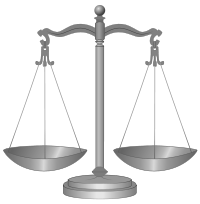 |
studentJD |
|
|
Students Helping Students |
Currently Briefing & Updating |
© 2010 No content replication for monetary use of any kind is allowed without express written permission
|
Parol Evidence Rule |
|
Parole Evidence Rule o In interpreting and enforcing a contract, questions often arise as to whether the written instrument is the complete embodiment of the parties intention. o Where the parties to a contract express their agreement in a writing with the intent that it embody the full and final expression of their bargain (i.e. the writing is an integration), any other expressions written oral made prior to the writing, as well as any oral expressions contemporaneous with the writing, are inadmissible to vary the terms of the writing.
Purpose o It is designed to carry out the apparent intention of the parties and to facilitate judicial interpretation by having a single clean source of proof (the writing) on the terms of the bargain.
How do we determine if the writing is an integration? o We break down into two questions whether a writing is an integration of all agreements between the parties.
1. Is the writing intended as a final express? 2. Is the writing a complete or partial integration?
RULE
2. Is the writing a complete or partial integration?
Complete Rule
i. CANNOT contradict. ii. CANNOT supplement.
Partial Rule
i. CANNOT contradict ii. CAN allow supplement
Who Decides if the writing is integration?
Decision Tree
i. If there is a jury, then the jury will make its own determination as to whether this extrinsic evidence was part of the agreement.
How is the Determination Made?
Williston Test (Question)
Williston Rules
Wigmore Aid (Question)
Wigmore Rules
3. Extrinsic Evidence Outside the Scope of the Rule
i. They will fall outside the scope of the parol evidence rule.
Attacking the Validity
i. Formation Defects o Formation defects that may be shown by extrinsic evidence include fraud, duress, mistake, and illegality.
ii. Condition Precedent (Admissible if NO contradiction) o This occurs where a party asserts that there was an oral agreement that the written contract would NOT become effective UNTIL a condition occurred, ALL evidence of the understanding MAY BE offered and received. o The rationale is that you are NOT altering a written agreement by means of parol evidence if the written agreement never came into being. o However, the parol evidence contradicts the express language of the written contract, it will NOT be admitted.
iii. Condition Subsequent (Not Admissible) o Parol evidence is inadmissible as to conditions subsequent. o An example would be an oral agreement that the party would NOT be obliged to perform UNTIL the happening of an event.
iv. Interpretation o If there is uncertainty or ambiguity in the written agreements terms or a dispute as to the meaning of those terms, parol evidence can be received to aid the fact-finder in reaching a correct interpretation or the agreement. o If the meaning of the agreement is plain, then parol evidence is inadmissible.
v. Showing of True Consideration o The parol evidence rule will not bar extrinsic evidence showing the true consideration paid. Example a. A contract states the $10 has been given as full and complete consideration. b. Extrinsic evidence will be admitted, by way of a defense, to show that this sum has never been paid. vi. Reformation o This occurs where a party to a written agreement alleges facts (i.e. mistake) entitling him to reformation of the agreement, the parol evidence is inapplicable. o Why? a. Because the Pl is asserting as a cause of action that despite the apparently unambiguous terms of the written agreement, those terms do not in fact constitute the agreement between the parties.
For the Pl to obtain reformation, he must how o There was an antecedent [prior] valid agreement that o Is incorrectly reflected in the writing (i.e. by mistake).
Burden o The party must prove clear and convincing evidence.
4. Collateral Agreements
Williston Rules
i. There is a merger clause, or ii. The courts find from ALL the circumstances that the writing was intended as a complete and exclusive statement of the terms of the agreement.
i. The course of dealing of usage in the trade, or ii. The course of performance to date, even if the terms appear to be unambiguous.
|